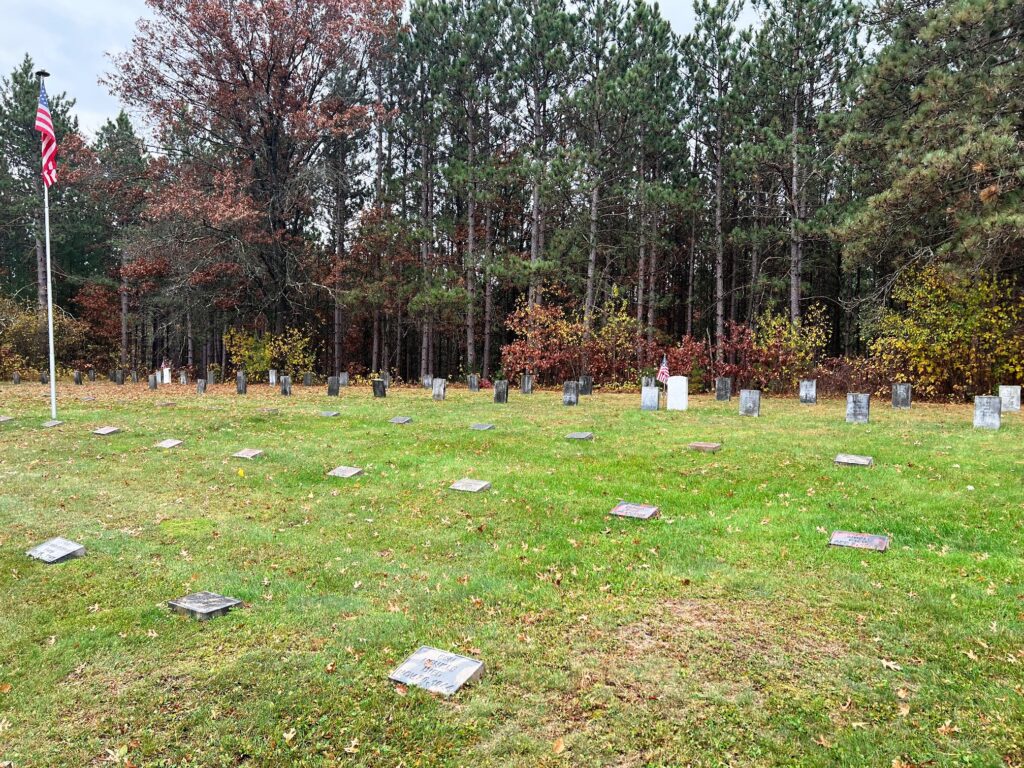Remembering the poor farm
November 7, 2022
It was a quiet afternoon with gray skies that threatened rain when I stepped into the Jackson County Poor Farm Cemetery.
Located just outside of Black River Falls along County Highway P are the remains of at least 120 souls who were buried in the small fenced-in cemetery. I say at least 120 because there are unmarked graves as well.
The Jackson County Poor Farm was established in 1870 by the county board to take care of people who could not support themselves. Like most other Wisconsin counties, it included adjacent farmland where paupers could work, with the idea that it would be less expensive to taxpayers.
The farm included some stock and machinery. The house had a kitchen, dining room, parlor and living room downstairs, with four bedrooms upstairs. Jackson County in 1905 moved its Poor Farm to the site of the present Pine View Care Center.
Many counties combined care for the chronic insane along with providing services to the poor, which were known as county asylum poor farms. The nearby counties of La Crosse established the West Salem Insane Asylum in 1887 as a 210-acre farm that later expanded to 550 acres. Trempealeau County built its asylum and farm in 1898.
While the history of some counties is less than stellar when it came to exploiting workers for profits, it was common practice in Wisconsin.

Some poor farm cemeteries are all but forgotten, but a wooden sign clearly marks the Jackson County location, which is neatly mowed and tended. According to cemetery records, I was able to find, the earliest burial was Anna Catarina Hautke in 1879. She was born in Germany in 1789. The last burial that I could find was Ben Henkle – birth unknown – on Nov. 30, 1944.
The Jackson County Poor Farm housed infants, young children, teenagers, the homeless, widows and the elderly who had no one to care for them. Some were adopted, others were placed in orphanages, some were committed to other institutions or transferred back to their home county.
Another stone marks the final resting place of Nancy Barnard, who was 20 years old when she showed up at the doorstep of the poor farm on June 24, 1885, according to a 2006 Jackson County Chronicle article. She was described as having short hair, no teeth and a deep fascination with dolls. Her condition was listed as “foolish,” which today would be known as some form of a mental condition.
Barnard lived at the farm until she died in 1936. Another Nancy Barnard who died in 1904 and was buried in the cemetery is likely her mother. Nancy’s brother Delbert Banard stayed at the farm twice and was a resident there when he died at the age of 44 on May 19, 1904. He is buried in the cemetery.
Nancy’s father Johnathan also had two stints at the farm before dying in 1888 of “dropsy.” He is not buried in the cemetery. Nancy had two daughters – the first was Hattie born in 1887. Hattie was taken to the state school in Sparta in 1891 and later moved to Dodgeville.
Her second daughter – Christina – was born on Nov. 8, 1890 and died about a month later. She also is buried in the cemetery. There was no record of the fathers.
There are at least two veterans buried in the cemetery. John Flinn – an Irish immigrant who served with the 2nd Artillery Unit in the Mexican American war from 1846 to 1848 – was buried in 1884 after succumbing to paralysis.
The other veteran is Hans Hanson, a Civil War veteran who served in Company G of the 10th Wisconsin Infantry. According to a 2010 research paper coordinated by Black River Falls teacher Paul Rykken, the 10th was mustered into service Oct. 14, 1861 and mustered out Oct. 25, 1864. The unit was involved in 19 notable battles in Georgia, Kentucky and Tennessee. There were 113 men from the Black River Falls area that served in the company.
A brief newspaper obituary said: “Mr. Hanson had been an inmate of the home for about a year. He had no relatives in this county. He was a quiet, inoffensive old man, but was overtaken by misfortune in his later years.”
It started to drizzle as I left the cemetery, where most died in obscurity. Their graves are marked with simple headstones.
Gone, but not forgotten.















Lilah Hart • Aug 28, 2024 at 12:05 am
I’m the third great-granddaughter of John Flinn. This is my first time learning that he passed away at the poor farm and that he was paralyzed. He and my third great-grandfather immigrated to the U.S. during the 1840s. They no doubt had dreams of a life that was better than the one they had in Ireland. It sounds like their life here wasn’t easy. I hate to think of how much he must have suffered before passing.
Trina • May 7, 2024 at 6:50 pm
Any insight on Brown County Poor Farm in Green Bay? Near UWGB? The land is just a block or two from where I live and now it’s a vacant lot to be built on. No grave markers… And definitely bodies… Published records of them even!!! With pending building permits, it feels like nobody cares… It’s so sad